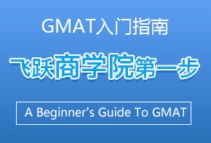2015年1月GMAT阅读机经之专利法案
2015-01-04 10:29
来源:新东方网整理
作者:芝士猫
2014年12月27日GMAT考试刚刚完成了新一轮题库更换,在此新东方网GMAT频道为各位考生整理了2015年1月GMAT阅读机经之专利法案,供考生们参考使用,希望对各位备考能有帮助。
想让机经来得更猛烈些?请戳>>2015年1月GMAT阅读机经汇总
1. 专利法案
【V1】
1995年和2006年关于owner of trademark的
【考古待确定…】
专利保护法
关于美国1995年和2006年的两个关于trademark还是patent的专利保护法案的,就一个F法案通过了以后怎样怎样保护专利所有人,但是说这个法案不利于法官判,后来又有个更保守T法案通过了,能先剔除一些case先缩小了到法庭打官司的范围,然后judges就很高兴。
Federal Trademark Dilution Act of 1995
Trademark Dilution Revision Act of 2006 (TDRA)
Trademark dilution theory 商标稀释理论is one of the most contentious aspects of trademark law.Although Congress enacted the Federal Trademark Dilution Act (“FTDA”) in 1996, courts struggle to interpret the statutory language.The definition of dilution is unclear, and the appropriate standard for injunctive relief is hotly contested.激辩申请禁止侵权
Additionally, no uniform framework for litigating dilution claims exists.The Supreme Court’s 2003 edict on trademark dilution in Moseley v. V Secret Catalogue, Inc. did little to quell disputes because the Court only addressed the standard of harm necessary for injunctive relief.Recently, in response to the Supreme Court’s interpretation of the FTDA in Moseley, Congress proposed an overhaul of the trademark anti-dilution law.Presently, Congress appears close to enacting the Trademark Dilution Revision Act of 2006 (“TDRA”).
This note evaluates whether the proposed TDRA provides beneficial alternatives to the current definition of dilution, methodologies for analyzing claims, and standard of harm necessary for injunctive relief. Part I provides an overview of trademark law and historical highlights of trademark dilution, including the emergence of blurring and tarnishment theories. Part II investigates the inherent weaknesses of the FTDA definition of dilution, explores courts’various methodologies for analysis of dilution claims, and explains the interpretations of the standard of harm necessary for injunctive relief. Part III explains the Supreme Court’s interpretation of the FTDA and identifies statutory language changes made by the TDRA in the three areas of dilution law explored in Part II. Part IV discusses the prospective impact of the TDRA in the three areas highlighted in Part II. Part V concludes the TDRA effectively addresses the need for a clear definition of dilution and analytical framework, and presents a pragmatic standard for injunctive relief.
Until 2006, the FTDA was distinguished from most state trademark dilution laws in several ways: (1) The FTDA protects only "famous" trademarks; most state statutes do not explicitly require trademarks to be "famous" to be protected against dilution. (2) The FTDA, as interpreted by the Supreme Court, protected only against "actual" dilution of a trademark, whereas most state statutes provided trademark owners with a remedy whenever they could show a "likelihood" of dilution. (3) The Supreme Court suggested (although it did not have occasion to hold) that the FTDA protected only against dilution by "blurring" and not against dilution by "tarnishment" (see below).
Amendments to the FTDA took effect on October 6, 2006. The Act still protects only famous marks. However, Congress amended the act so that it expressly provides protection against a use of a mark that is "likely" to cause dilution. The new statute thus eliminates the requirement of proving "actual dilution."新的法案不要求提供actual dilution的证据,因此变得容易
问题:
1、主旨题
2、法官为何喜欢修改过的法案,对于dilution的释义更明确
一、 关于专利法案。【考古确认】
V1.
1995年有一个专利法案,为了更好保护专利拥有者。但事实却不是这样的(没弄很懂原因)。2006年出了个新的法案,更为保守。
V2:
专利法案,三题,一屏整。考了法官为什么喜欢新法案(or不喜欢旧法案= =),非常确定选的是因为1996 Act serve better public policy(楼主学的就是这个,结合文章秒懂!)
V3:
FTDA商标题。内容就不说了。寂静都很全面。直接分享题目和我的答案吧。
文章主旨?我选择了disuss the development of trademark. 其他都过于侧面,这个比较靠谱。
高亮了第一段最后两个句子,问作用:第一句是说出key ways,第二句是illustrate how the key ways can be applied.
还有一题好像跟法官有关,我记得我选择了有说good public policy的选项。

新东方网GMAT官方微信:新GMAT满分备考 (微信号:newgmat)
这里有大家关心的GMAT考试信息、备考技巧、留学资讯,第一时间与大家分享新东方独家消息,是考G之路上的必备良友。






















